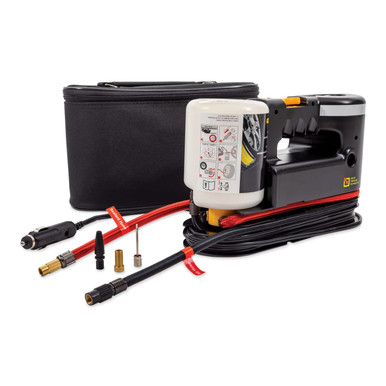Fairly generic question to be sure, but it'll probably generate some interesting answers
Just asking because I'm about to go on my second (maybe third) "long" trip
Just asking because I'm about to go on my second (maybe third) "long" trip
You can install our site as a web app on your iOS device by utilizing the Add to Home Screen feature in Safari. Please see this thread for more details on this.
Note: This feature may not be available in some browsers.
I've heard disappointed Roadside Service so I bought tools and a full-size tire as a spare. Got one for my Model 3 and another one for my Model X.Fairly generic question to be sure, but it'll probably generate some interesting answers
Just asking because I'm about to go on my second (maybe third) "long" trip

I would be caution using that jack. From what I'm reading, it has a safe working load of 1000kg (2240 lbs). The Model Y LR AWD has a curb weight teetering over 2000kg (4500 lbs) unloaded. The general rule of thumb I learned was the working load needs to be 2/3 the weight of the vehicle at min. This was before super stiff vehicles like the MY existed, so I'm not sure if that napkin math works out.
- Porsche Aluminum Scissor jack - this needs to e modified, but is light weight and strong, and most importantly, has a low profile that works with a flat tire. See this article on modifying the jack
I agree that you want to have as much safety margin as you can, but the height of the chassis ends up being a problem if you have anything but a low-profile jack. This is because of the clearance with a fully flat tire,I would be caution using that jack. From what I'm reading, it has a safe working load of 1000kg (2240 lbs). The Model Y LR AWD has a curb weight teetering over 2000kg (4500 lbs) unloaded. The general rule of thumb I learned was the working load needs to be 2/3 the weight of the vehicle at min. This was before super stiff vehicles like the MY existed, so I'm not sure if that napkin math works out.
While it's certainly possible to operate the jack and complete the tasks safely of swapping or repairing a tire, I just caution that this is eating up all factor of safety and the flustered, frustrated version of yourself who is on the side of the road needs to be very careful and deliberate when lifting the vehicle.
Alternatively, you can source a heavier, 2T (4000 lbs) scissor jack and have some piece of mind, though it will likely not be as compact and light as the aluminum version! I know this may be unreasonably cautious but scissorjacks are inherently unstable for the application we use them in and I would hate for our weight weenie tendencies (let's face it, weight = more kW) to drive a 200 dollar repair bill and 30 minute repair or swap through the rough.
If you use either jack point on one side of the Tesla it will lift up that entire side of the vehicle... could you use the jack point that is away from the flat tire to get enough clearance for a heavy duty jack, and after the car is up put a jack stand under the jack point next to the flat tire for safety and stability?I agree that you want to have as much safety margin as you can, but the height of the chassis ends up being a problem if you have anything but a low-profile jack. This is because of the clearance with a fully flat tire,
The weight of the MYLR is about 4400 lbs (4419 for Performance). 2/3 of that weight would be 2933 lbs, or 1.5 tons, so that is what you are looking for. Ideally, if you could bring a shop jack that was low profile, that would be ideal but the weight can be in the order of 30 to 40 pounds. The Porsche jacks are rated for 2 tons (I don't know if all are). This article discusses this. And of course, one should always bring a piece of wood to put under the jack in case you are on mud. And be careful anytime you are using any jack, and especially a scissor jack. Never put any body part under the car while jacked.
For sure; usually it is the front jack point that is used to lift both wheels of the Tesla vehicle off the ground. There still might not be enough ground clearance to use a non-low profile jack without first driving onto a curb or a piece of wood to raise up the vehicle.If you use either jack point on one side of the Tesla it will lift up that entire side of the vehicle... could you use the jack point that is away from the flat tire to get enough clearance for a heavy duty jack, and after the car is up put a jack stand under the jack point next to the flat tire for safety and stability?
Keith
Get the slime kit. It’s the same as the one Tesla sells but much less expensive. So far I’ve gotten two flats in my MY, one in my Clarity, all three times the slime worked and got me to the Tesla service center (or regular tire shop) where I got a new tire and was on my way in about an hour (all three were unpatchable. I’m just really unlucky I suppose)


